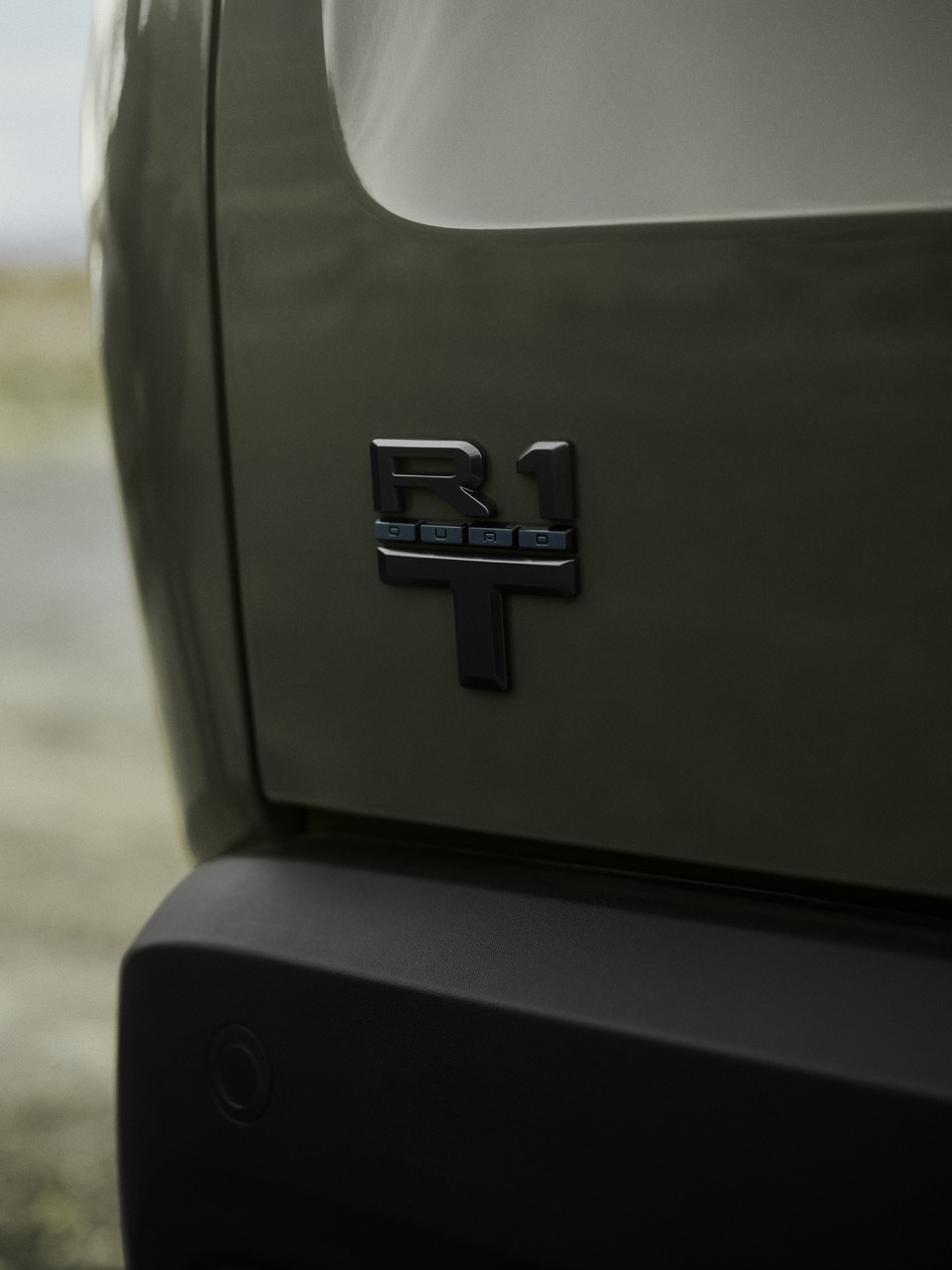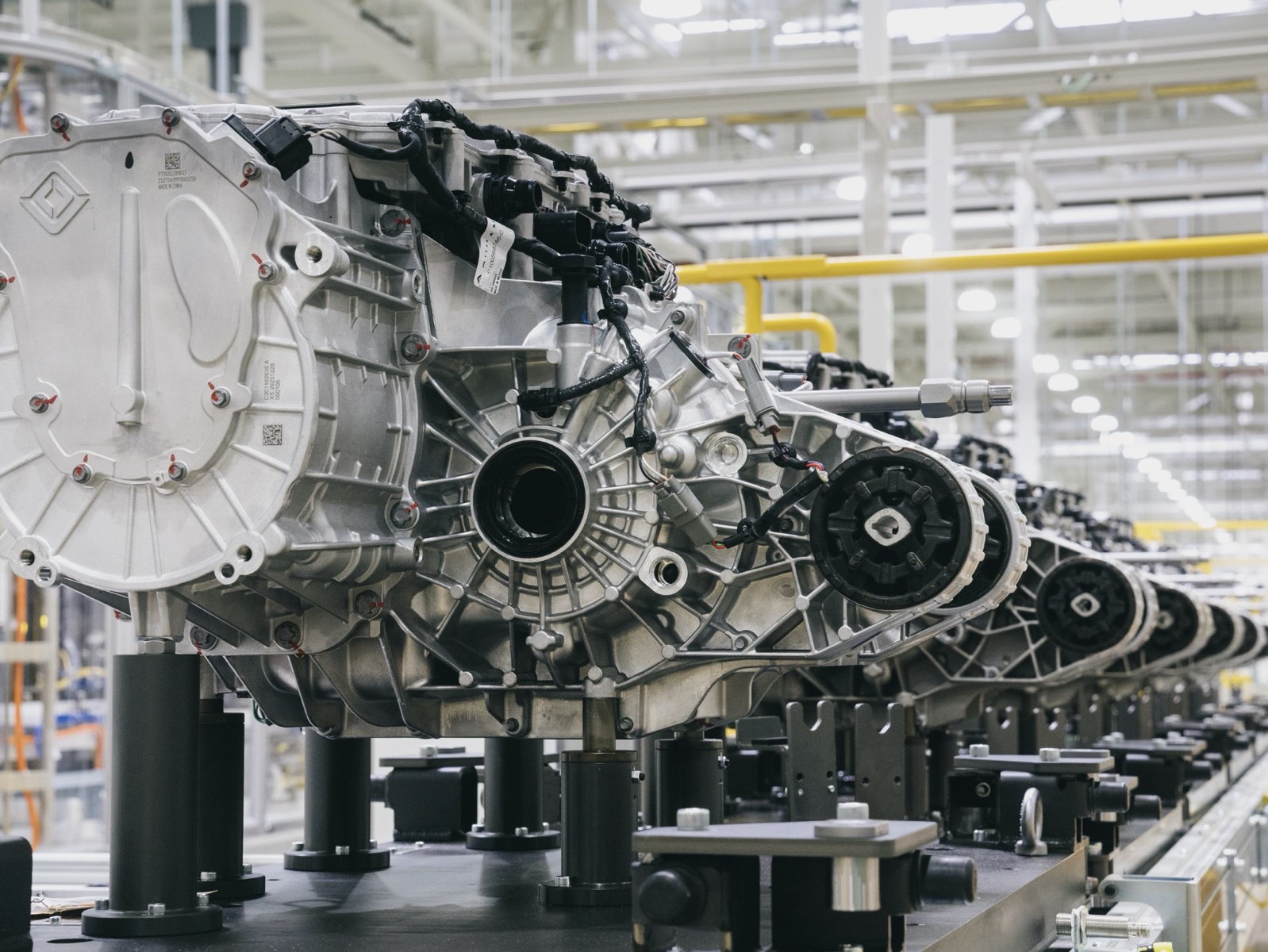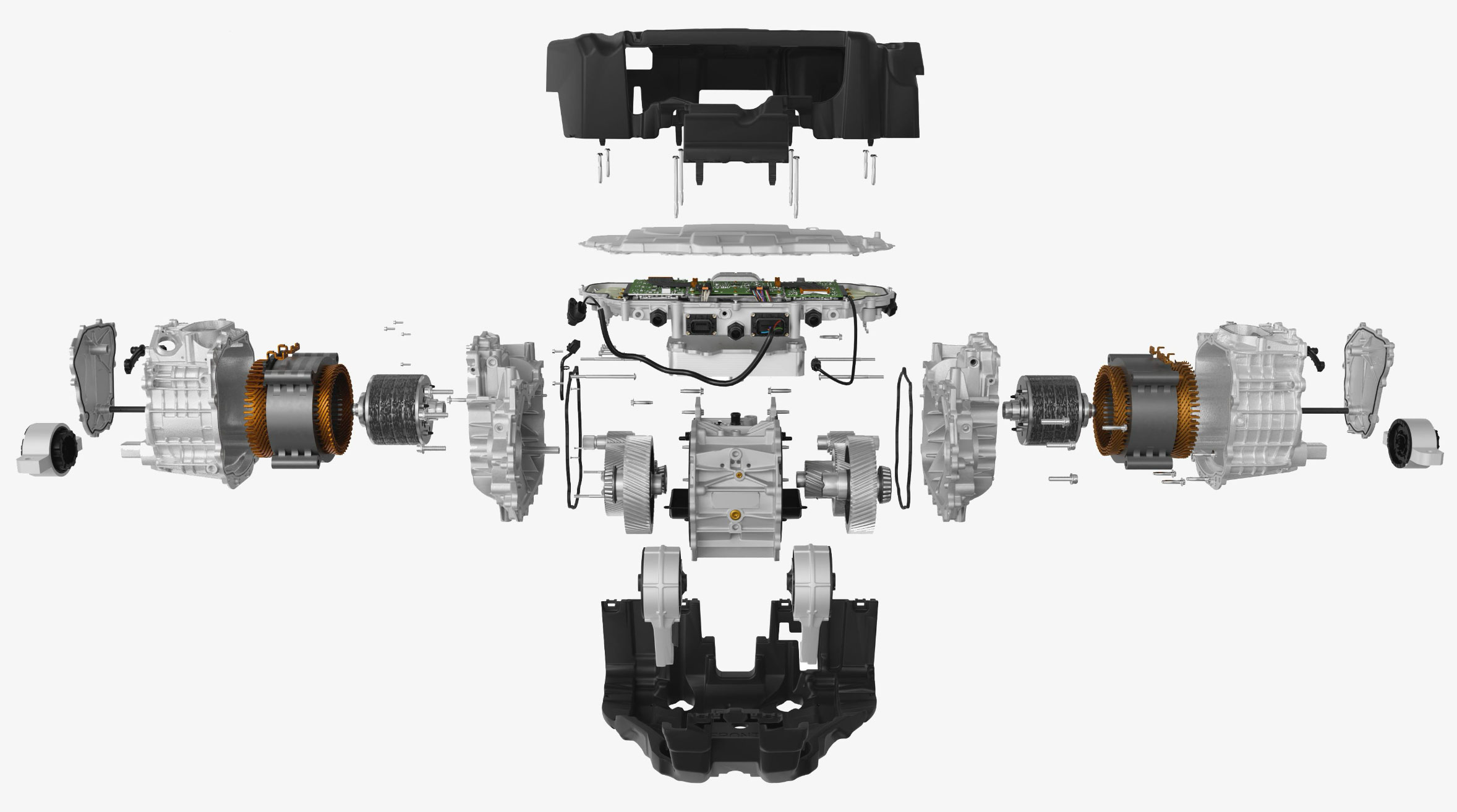Rivian Gen 2 Quad Motor Offers Better Cooling and Efficiency

On paper, both the Gen 1 and newly released Gen 2 Rivian R1T and R1S offer quad-motor configurations, four motors, one per wheel, with torque vectoring and serious off-road capability. But with the Gen 2 Quad officially launching yesterday, it’s clear the motor technology isn’t just updated, it’s been completely re-engineered from the ground up.
Rivian went from using externally sourced Bosch motors in Gen 1 to fully in-house designed Ascent motors in Gen 2 Quad. That change has a massive impact on performance, cooling, efficiency, and long-term serviceability.
Let’s dive into what’s different.
Bosch vs. Ascent
The Gen 1 Quad was built using Bosch-supplied motors, each one an independent drive unit with its own motor, gearbox, and inverter. These units delivered instant torque and raw power, roughly 835 horsepower and 908 lb-ft of torque combined, and enabled true torque vectoring at each wheel.
But they were also heavy, less efficient, and limited in how they could be managed or updated. Bosch units couldn’t be easily serviced by Rivian, and their cooling systems weren’t deeply integrated into the rest of the vehicle.
In contrast, the Gen 2 Quad uses Rivian’s new in-house Ascent motors, developed specifically for high-performance Quad-Motor configurations. These are entirely separate from the Enduro motors used in Rivian’s Dual-Motor setups. The Gen 2 Quad features two Ascent motors in the front and two in the rear, still four motors, but now fully modular, more efficient, and designed for better thermal management, serviceability, and future scalability.

Cooling Is Where the Real Difference Shows
The Gen 1 Bosch motors used traditional liquid-cooling loops, but they weren’t deeply tied into Rivian’s vehicle-wide thermal management. This made them prone to heat soak, especially during towing, trail driving, or repeated hard acceleration. You’d get full performance up front, but the system would pull back if things got too hot.
Gen 2 Ascent motors fix this in a big way. Each motor is directly liquid-cooled, with coolant flowing through the motor housing. They’re also tied into a centralized thermal system that manages motor temperatures alongside the battery and HVAC, all coordinated by Rivian’s software.
That means the system can intelligently balance cooling across the vehicle. If the motors are working hard, they get the coolant priority. If you’re in freezing temps, the motors and cabin can share heat from the same heat pump. It’s smarter, more efficient, and it performs better when pushed.

Power Vs. Control
The Gen 1 Quad is fun in a raw, brute-force kind of way. It launches hard, with aggressive torque at each wheel. Some off-roaders even prefer its old-school feel, especially in sand or technical rock crawling.
But it’s also more abrupt and twitchy under partial throttle, and it lacks some of the finesse Gen 2 brings to the table.
Gen 2 Quad, while just as powerful, and in some cases slightly more so, feels more refined and repeatable. The power comes on smoother, the torque is more predictable, and performance doesn’t drop off under load or heat. It may not “feel” as wild, but it’s more composed, efficient, and consistent.
| Feature | Gen 1 Quad (Bosch) | Gen 2 Quad (Ascent) |
|---|---|---|
| Motor Source | Bosch (external) | Rivian in-house |
| Layout | 4 independent drive units | 2 Ascent motors front, 2 rear |
| Peak Power | 835 hp | 1025 hp |
| Torque | 908 lb-ft | 1198 lb-ft |
| Cooling | External liquid loop | Direct liquid cooling with heat pump integration |
| Heat Soak Behavior | Common under heavy use | Significantly reduced |
| Efficiency | Lower | Higher |
| Serviceability | Full unit swap | Modular, repairable |
| OTA Support | None | Fully OTA capable |
| Cost to Build | High | Lower (scalable) |
The Gen 1 Quad-motor setup was a technical flex, brute-force torque with high-end drive control. But it came with compromises in cooling, efficiency, and future potential.
The Gen 2 Quad brings smarter, smoother, and more serviceable power. It’s just as quick, but way more refined. For most buyers, it’s a better long-term bet, especially if you care about repeatable performance, updates, and efficient use of range.
If you want something a little raw and a lot of fun, Gen 1 still has its charm. But Gen 2 is the evolution of Rivian’s powertrain strategy, and it’s what the company will be building on from here forward.
